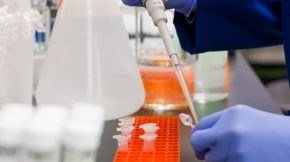How Much Does Hair Grow In A Month? Read For Better Understanding
Share
Do you know that everyone’s scalp has over 100,000 follicles? Well, now you know. The follicle is that tiny pouch that stretches throughout the skin, and hair grows out of it.
We all are born with all the hair cells that we can have over our lifetime. And there are approximately 5 million of them on our bodies, with the scalp boasting the densest hair cells compared to other parts of the body.
It is also important to note that aging can cause most of our follicles to stop producing hair, leading to thinning and balding.
Alright, before we dive deeper, let’s answer this quick question:
How much does hair grow in a month?
The first thing you need to understand is that hair grows a certain length within a month. The American Academy of Dermatology Association reports that hair grows 1 to 2 inches every month, on average. But let’s not forget several factors determine how fast one hair grows. Your hair growth per month could also be faster than someone else. Not every follicle on the scalp grows hair at the same time or rate.
So, that’s how much a strand of hair grows monthly. But we have more information lined up for you. Continue reading for in-depth understanding.
Factors That Could Determine How Fast Hair Grows
The hair on the scalp of two individuals (male or female) from the same parents may grow at different speed levels. That is one’s hair may possibly grow faster than the other.
Besides genetics, which many of us are familiar with; other factors can influence how fast your hair grows. These include the following:
Genetic factor:
Genetics can have a massive impact on the speed at which your hair grows. The Lhx2 gene activation causes hair to grow faster. Additionally, genes also affect hair thickness and texture (wavy, straight, or curl) in individuals from distinct ethnic backgrounds.
Sex:
Men and women carry an equal number of follicles on their scalps. However, men’s hair tends to grow faster than women’s. And we are referring to a comparison between healthy males and females, not just any random individual.
That’s not all. Pregnancy can also speed up hair growth in women.
Time of the year:
Did you know that the time of the year could influence how your hair grows? Yes, it can. Hair grows faster in the summer period than in winter. The warmness of the weather increases the supply of the nutrients required for keratin production.
Environmental factors:
Someone living in a polluted environment and another in a clean one would experience varied hair growth rate. Pollution carries with it dirt, soot, grime, and other chemicals that choke and destroy the hair roots on the scalp.
In this case, washing the hair regularly and keeping them clean will help your scalp to breathe. Washing will speed up your hair growth.
Age:
Consider looking at the category of people whose hair is thinning out or getting bald. You will find that they are people above the age of 30.
Age can affect your hairs’ growth speed. Hair grows much quicker between the ages of 15 to 30. And as one gets old, some follicles may even retire from hair production. Balding and thinning can set in.
Exercise:
If you lead a sedentary lifestyle, this should make you change your mind. Exercise is not just only going to make you physically and mentally fit. Each strand of hair also benefits when you move that body.
Experts have suggested that exercising moderately every day for 35 to 40 minutes can rejuvenate your hair and cause it to grow healthily.
So, if you’re not exercising but want gorgeous and healthy-looking hair, you better have a change of mind.
Good nutrition:
Nutrient intake can influence one’s hair growth rate. With poor nutrition, your hair might not grow healthily or quicker as expected.
It would help if you constantly had the right nutrients and in an adequate proportion, for that matter, for your hair health. These include vitamin A, C, D, E, zinc, iron, protein, biotin, B vitamin, and essential fatty acid.
A deficiency in these nutrients slows hair growth. Hair loss can also occur as a result.
A Handy Tip: Zinc or iron deficiency, which can lead to hair loss, can be corrected by getting enough of these nutrients. But have in mind that it may take a couple of months before the hairs on one’s scalp starts regrowing the way they should.
Hair products you’re using:
Wait a minute, what type of hair products have you been using? Is it chemical-free? If yes, then it’s evident that you’re looking after your hair incredibly well.
Chemical-based hair products are not good for one’s hair. They can damage your hair and even hamper hair growth rate.
The Different Stages Of Hair Growth
Hair growth happens in three distinctive phases, and it’s important we look at each of them. Each hair strand boasts its timeline too.
Here are the three hair growth phases:
Phase#1: Anagen:
This refers to an active growth stage of one’s hair. It’s also the longest hair growth phase, lasting 3 to 5 years. But for many people, a strand of hair can continue growing for seven years or more. So, your hair can get up to 3 feet long during this phase.
This hair growth stage is also marked by cell division. The cells present at the root of one’s hair actively divide super fast. A new strand of hair emerges and pushes the ones that have gone past the anagen phase up the follicle until they finally come out.
The hair being pushed up is called the club hair, and they may have stopped growing. They have also gone way past the anagen hair growth phase.
One thing you should understand is that hair can grow approximately 1 centimeter every 28 days. And that this anagen growth phase varies from person to person. While some hair experience short growth phase, others may have a longer phase.
Individuals with super long hair on their scalp boast a long active growth phase. Those with shorter hair or problems growing their hair beyond a specific length boast a short active growth phase.
A Handy Tip: Active growth phase of hair in the eyelashes, eyebrows, arms, and legs is short. It’s approximately 30 – 45 days. So this shows why scalp hair is longer than hair in these parts of the body.
Phase#2: Catagen:
The catagen happens to be the phase of hair growth where the club hair emerges. It’s a transitional phase, and over 3 percent of hairs happen to be in this phase at some point.
In the catagen growth phase, one’s hair growth seizes for a while. It is usually 4 to 6 weeks long. And when growth stops, the outer root sheath does shrink and attaches itself to the hair root. This leads to club hair formation.
Phase#3: Telogen:
This hair growth phase accounts for about 6 – 8 percent of all hairs. One’s hair follicle is usually at rest during this growth phase, and club hairs have been completely developed.
You can identify when your hair is in the telogen growth phase when you pull out a strand from the scalp. The root will have solid, dry, white, and hard material.
Additionally, keep in mind that it is normal to shed some hair during the telogen growth phase. You may shed between 25 to 100 strands of telogen hair.
A Handy Tip: The telogen phase normally lasts for about 100 days for hairs on one’s scalp. But it lasts longer for other parts of the body like the leg, arms, eyebrows, and eyelashes.
Foods That Promote Hair Growth Naturally
Did you know that your hair is what you eat? Yes, that’s 100% true. The things you eat daily or your lifestyle doesn’t only impact your health in general. It can also determine how healthy and speedily your hair would grow.
For this reason, we have managed to handpick a sizeable number of foods that are good for your hair. Here they are:
- Eggs – Comes packed with protein and biotin.
- Berries – Contains vitamin C, which boasts strong antioxidant properties.
- Avocado – Packed with healthy fats and vitamin E.
- Fatty fish (Mackerel, salmon, and herring) – Omega-3 fatty acid.
- Spinach – Packed with iron, folate, vitamin A and C.
- Nuts – Source of zinc, B vitamins, essential fatty acids, and vitamin E.
- Oysters – A great source of zinc, known to encourage hair growth.
- Beans – Contains a rich source of zinc, biotin, iron, and protein.
Conclusion
So, we have stylishly provided the answer on how much hair grows in a month and other crucial information you need to know about hair health. Hair is pivotal to how a person looks. It can shape your look and make you more attractive.
Furthermore, even if you happen to be a wig enthusiast, that doesn’t mean you shouldn’t take proper care of the natural hair on your scalp. The condition of the hair on a person’s scalp tells a lot about his or her personality. So, start treating your hair nicely so they can grow properly and look super attractive.

















